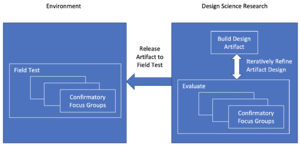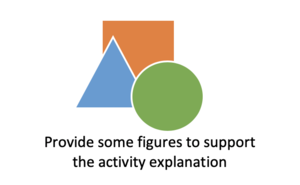Focus Groups according to Tremblay et al
Process description
The following activities describe the use of focus group methods to evaluate and refine design artifacts in the IS field. This method is adapted from traditional focus group techniques for use in design research projects. This method describes two types of focus groups: exploratory focus groups (EFG), which are used for the design and refinement of an artifact; and confirmatory focus groups (CFG), which are used for the confirmatory proof of an artifact’s utility in the field. The primary challenge is the structuring of focus groups so participants can collectively use an information systems artifact in order to provide feedback. This method describes one potential approach, in which participants collectively decide on an outcome both with and without the artifact, in order to compare decision-making strategies[1].
Formulate Research Problem
Description
In order to effectively define the content and focus groups, the research goals must be clearly identified. Design researchers seek to design an artifact, incrementally improve the design, and evaluate its utility and efficacy. These are two complementary, yet different, research goals. The figure illustrates the positioning of the two types of focus groups—exploratory and confirmatory—in the design research process. As discussed more fully in Hevner [2007], two forms of artifact evaluation are performed in a design research project—the evaluation of the artifact to refine its design in the design science build/evaluate cycle and the field testing of the released artifact in the application environment. We discuss the similarities and differences between exploratory focus groups and confirmatory focus groups as follows[1].
Examples
Further Readings
Provide further readings for activity 1.
Identify Sample Frame
Description
Describe Activity 2.
Examples
Provide some examples for activity 2.
Further Readings
Provide further readings for activity 2.

